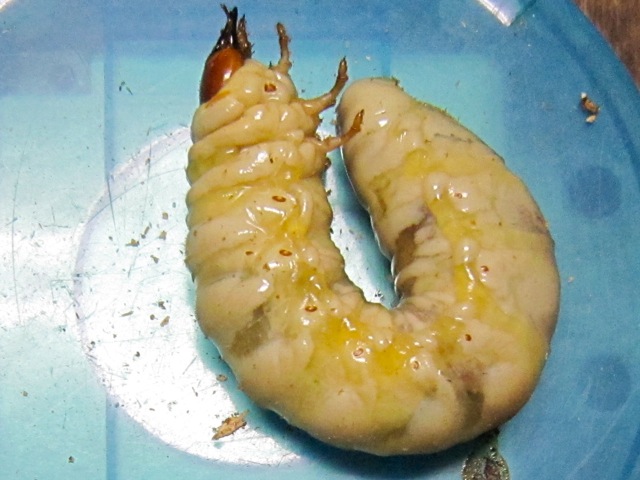
Raw sawdust as pupation substrate
Share
Flake soil tends to decay over time, making it somewhat unstable for larvae to construct pupal chambers, especially for Lucanus and Odontolabis species that remain in these chambers for extended periods.
For that reason, raw sawdust can be used as a pupation substrate instead of flake soil. Plus, who wants to waste flake soil on a larva that's close to pupation anyway?
When the larva is almost done growing and full of fat, it should have a creamy coloration and have little to no flake soil in its gut:

For some species like Lucanus elaphus, fully grown larvae will start wandering on top of the flake soil in search of inorganic material like clay. Since raw sawdust by itself takes a long time to decompose, it effectively serves as an inorganic material.
To set it up:
1. Remove all the flake soil from the container.
2. Fill about 80% of the container with moderately moist raw sawdust—neither too wet nor too dry.
3. Firmly compact the sawdust to ensure it is well-packed.
4. Place the larva in the container and loosely cover it with additional raw sawdust.
If you're unsure whether your larva is done growing, you can fill and compact the bottom half of the container with raw sawdust and top it off with flake soil. This way, if the larva needs additional food, it can feed on the flake soil as needed.
In my experience, this raw sawdust substrate method has proven effective for all stag beetle species. It has also worked well for rhino beetles such as Trypoxylus dichotoma and Xylotrupes florensis. However, I haven't tested it with big dynastid species or Goliathus yet. If you have success using this method with big dynastids or Goliathus, please let me know!
Here's a picture of a Lucanus capreolus male in its pupal chamber made with raw sawdust:

-David